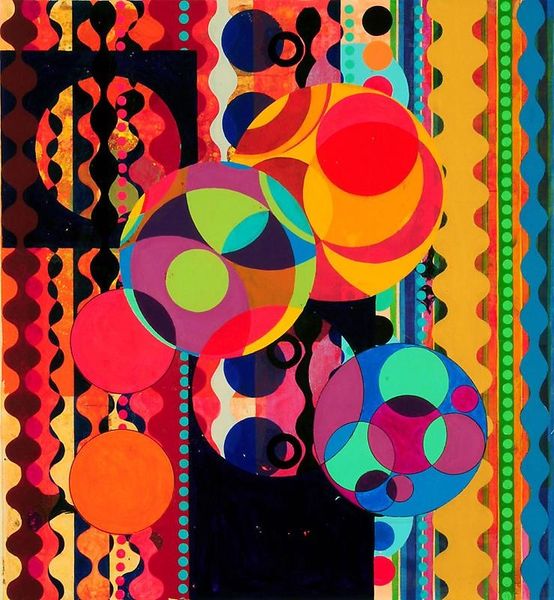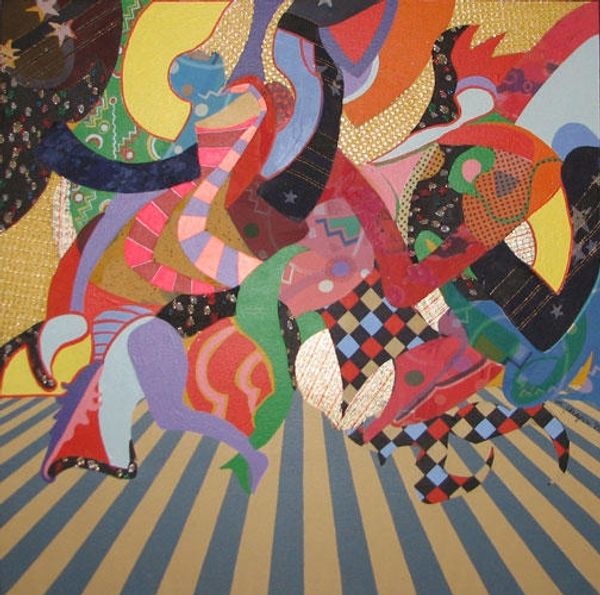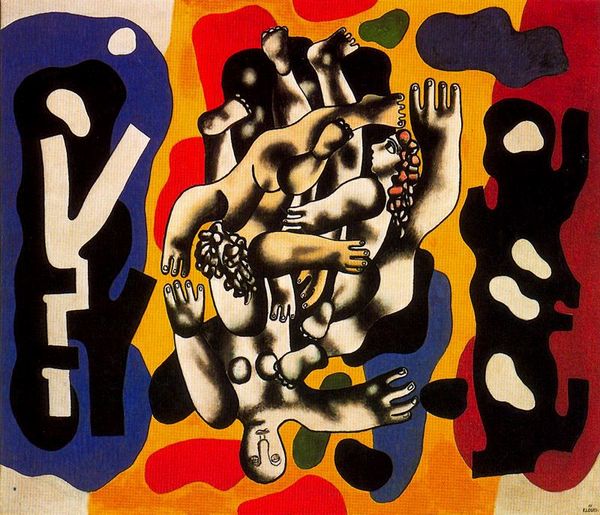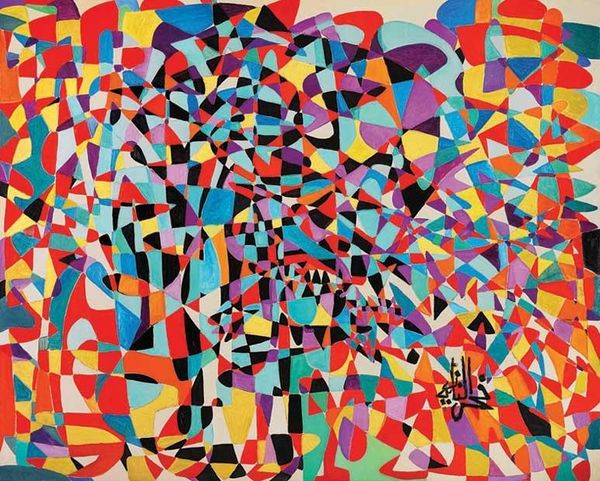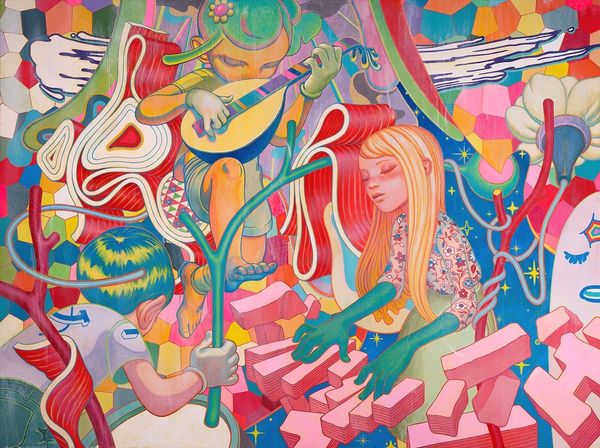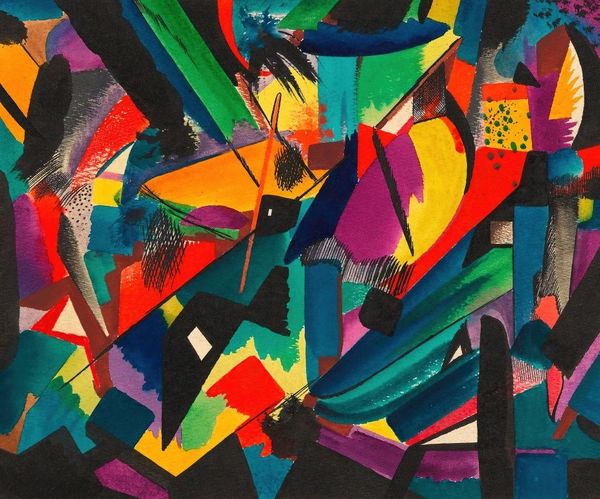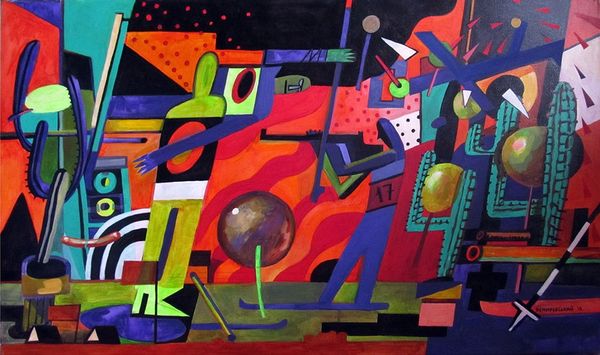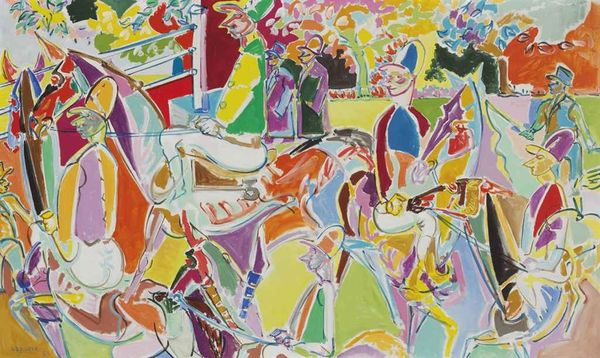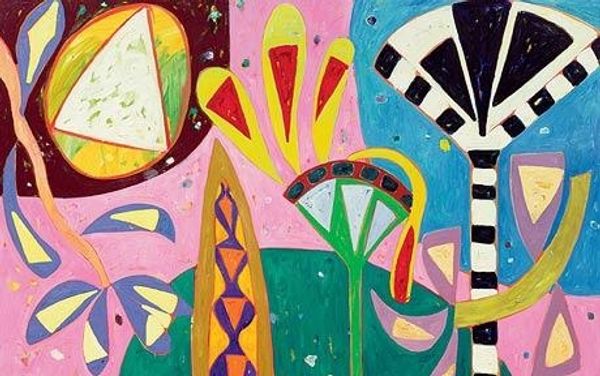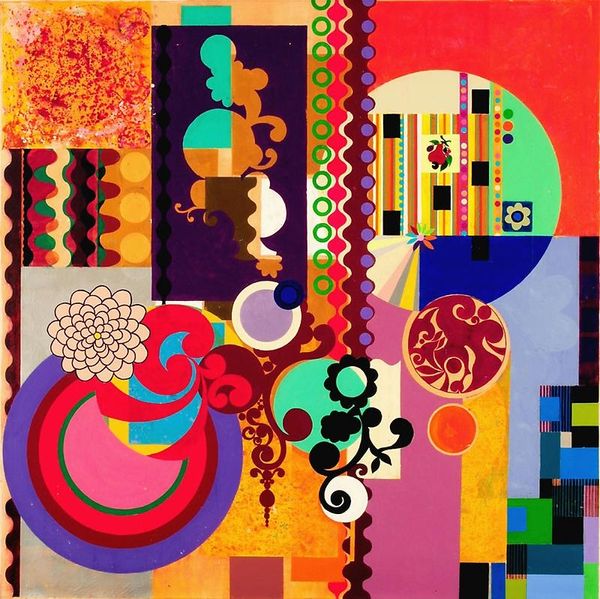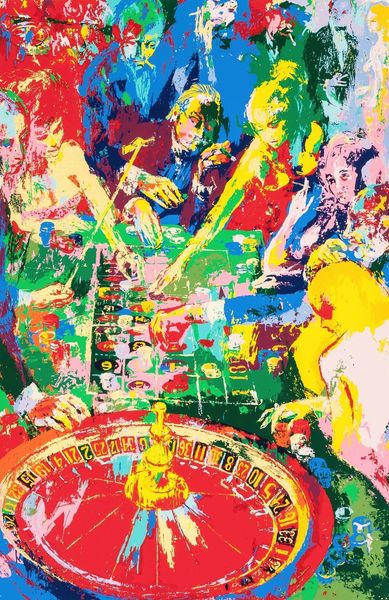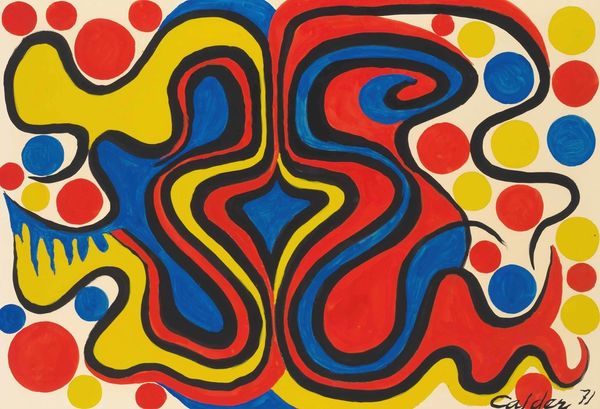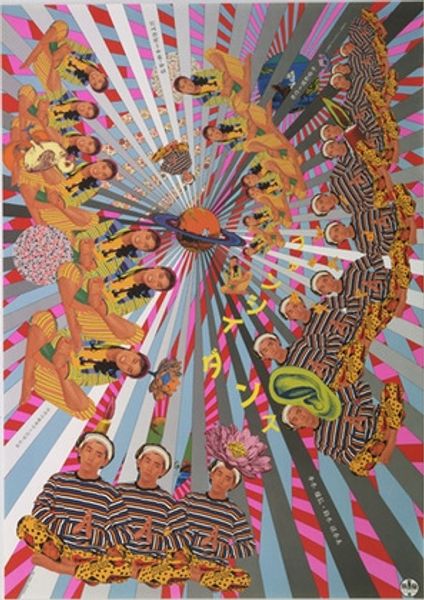
#
pop art-esque
#
popart
#
loose pattern
#
pop art
#
geometric pattern
#
abstract pattern
#
pattern repetition
#
psychedelic
#
funky pattern
#
motif
Copyright: Antonio Palolo,Fair Use
Curator: Well, hello there! Before us hangs Antonio Palolo's striking "Untitled" piece, created in 1966. What are your first thoughts? Editor: Pure visual cacophony! It's an explosion of colour and shape. Honestly, it’s a bit overwhelming. Does this embody the psychedelia of the time for you? Curator: Precisely! It screams the 1960s with its vibrant palette and geometric yet organic forms. Notice the motifs, the circles and stripes, recurring and interweaving. It evokes a kind of free-spirited rebellion against the more rigid artistic conventions. Palolo presents an abstract take on the visual languages gaining ground back then, as Pop Art infiltrated the mainstream and psychedelia pervaded cultural expression. Editor: I see the repetition now – it creates a sense of rhythm, almost hypnotic. And those black and white checks. Juxtaposed to this effusive chaos it's unsettling, the kind of visual language that you saw everywhere from album covers to fashion design... But does all this patterned flatness challenge ideas of perspective and depth, rejecting the historical obsession with realism in painting? Curator: Good point! The flattening of perspective pushes everything to the surface, inviting active viewing, instead of passively accepting representation. It embraces playfulness in visual vocabulary. In other words, pattern acts like code that bypasses rationality for more emotional or sensory registers of communication. What impact do you think that had in the Portuguese cultural landscape of that moment? Editor: Portugal in the '60s, still under a dictatorship. Perhaps this offered an escape. Maybe even a silent protest. These artworks become colourful, subversive statements amidst a more repressive reality. Curator: Exactly, so by prioritizing free expression, he questions cultural repression. In many ways, visual languages act as vehicles for challenging or subverting authoritarian control. And what seemed simple at first glance speaks of greater contextual nuances, beyond pure form. Editor: It’s funny, something so apparently lighthearted actually hints at much deeper cultural and political currents, revealing just how subversive an embrace of pattern can be! Curator: Yes, definitely a lot to consider. It’s fascinating how something can appear to be frivolous turns out to be heavy in implications! Editor: Absolutely. And hopefully our reflections offer some context to the listeners too.
Comments
No comments
Be the first to comment and join the conversation on the ultimate creative platform.

